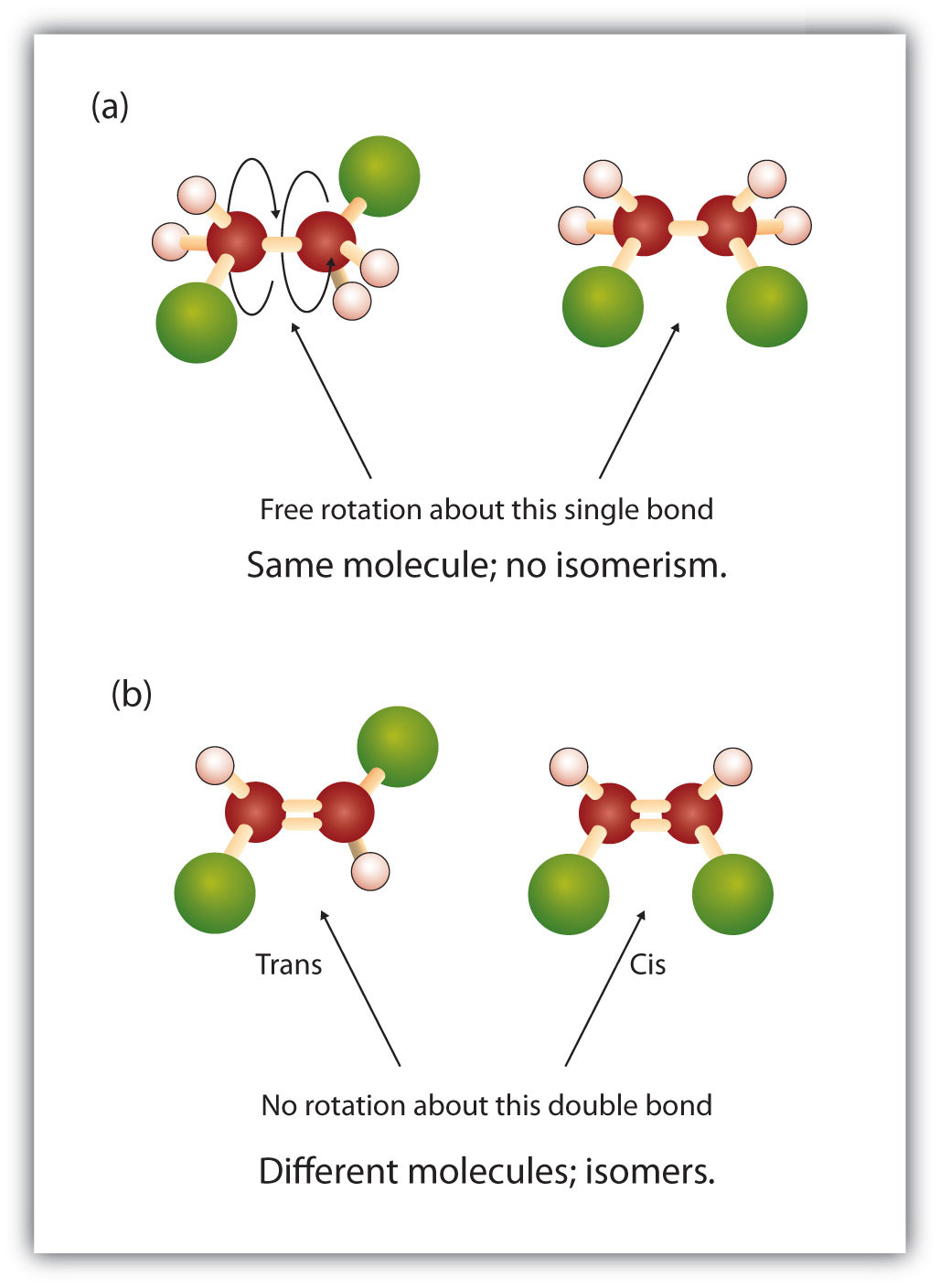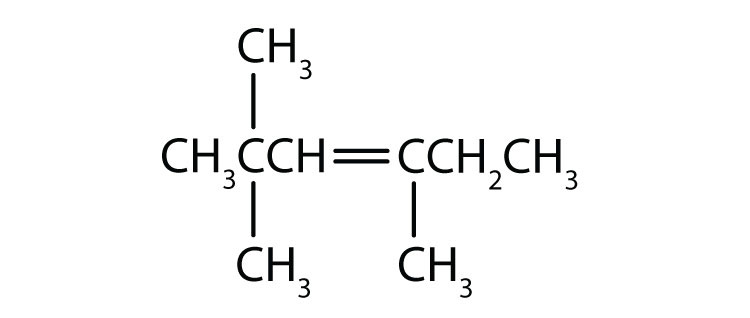4.2 Names and Structures for Hydrocarbons
As we considered organic structures in the earlier portions of this book, alkanes were presented as examples because they are in many ways the simplest of organic molecules. And yet hydrocarbons can be very small or very large, can include straight chains of carbons or elaborate branching, and can have ring structures and even bridging carbons over rings. The alkenes and alkynes have double and triple bonds that produce new complexities in the structures, as well as reactivity. Then there is the issue of aromaticity, a phenomenon related to structure that is also common among hydrocarbon compounds.
Hydrocarbons are not simple!
You have already learned the basic naming conventions for small (1-10 carbon) straight chain and somewhat branched alkanes. These include a suffix ‘ane’ to indicate membership in the alkane family, the base of the name related to the number of carbons (e.g. ‘hex’ for a six-carbon parent chain) and indication of branching with a location for the branch and a name for it:

Check your understanding by completing the questions in the short quiz here.
Exercise 4.2.1-3
When faced with a structure containing a functional group such as an alkene, the name of the related alkane can be a good starting point. Most elements of the name will be the same, with the exception that the identity and location of the functional group itself needs to be conveyed somehow. For the alkenes, the suffix used is no longer ‘ane,’ but is now ‘ene.’ The location of the double bond is identified with a number. Count a parent chain that includes the alkene, counting from the end of the chain with the lowest possible number assignment given to the double bond. Then use the number of the carbon where the double bond is first encountered as the location indicator. Current IUPAC rules put the number immediately before the ‘ene’ suffix, but name changes are sometimes accepted rather slowly; it remains very common to see this number earlier in the name:

Acceptable names for this molecule include 3-methylhex-2-ene and 3-methyl-2-hexene. IUPAC rules encourage placing the location identifier close to the feature at that location. The first name follows IUPAC rules to the letter. However these names can seem awkward even to chemists, and the second form is used frequently.
Other aspects of naming alkenes are identical to the process used for alkanes: the parent chain is indicated by the base name and the branches are numbered and named just as they are for alkanes.
Geometric Isomers in Alkenes
One other structural variation occurs with alkenes. The geometry of the carbon-carbon double bond is fixed, with no rotation along the axis of the double bond. Thus, two different isomers of a substance are often possible. Just like the structural isomers we have already considered, these are related but different compounds that have the same molecular formula. However, the geometric isomers are also the same in terms of their atom connectivity: each atom in the molecule has the same types of bonds (same connections) to its neighbors. The difference lies only in the 3-dimensional layout of the molecule.

The word prefixes ‘cis’ and ‘trans’ are commonly used to indicate which of the two geometric isomers is being identified.

The ‘cis’ and ‘trans’ nomenclature is based on the parent chain: if the chain comes into the double bond on one side (long axis) of the double bond and leaves on the same side, it is a ‘cis’ isomer. If the parent chain leaves the double bond opposite where it came in, the isomer is termed ‘trans.’
IUPAC has a system for handling the distinction between these geometric isomers that uses the letters E and Z. For IUPAC, E and Z names are derived by applying a set of rules that rank the groups connected to each carbon of the double bond, and assign one with a higher priority than the other. By then following the trail of these groups, from higher priority atom through the two carbons of the double bond and out the other side, the arrangement can be identified and named. If these higher priority groups enter and exit the alkene on the same side (along the axis of the double bond) the molecule is described as ‘Z,’ short for zusammen, German for ‘together.’ If the groups enter and exit the double bond on opposite sides the structure is identified as ‘E’ for entgegen, meaning ‘opposite.’
Z and E isomers often correspond with cis and trans isomers, but not always, since the priority groups are usually but not always in the parent chain.
Note that alkenes at the end of a carbon chain will not exhibit this kind of isomerism, because the carbon at the end of the chain has two hydrogens on it:

Why does this geometric distinction matter? The reason is because these isomers are different substances, and will have different characteristics. Specific isomers must be incorporated into pharmaceuticals containing alkenes, for instance, if they are to have the desired characteristics and not deleterious effects.
If you reconsider the structure above you should now recognize that it is one of these isomers. Since the parent chain comes into carbon 2 from below and exits from carbon three above the plane of the double bond, this is a trans isomer and could be better named as E-3-Methylhex-2-ene.
Remember these systematic names are coded information, and like any code it takes time and practice (and frequent errors along the way) to learn. With repeated use the code becomes familiar and you can become fluent in reading and understanding the names and structures.
You can practice naming some alkenes by completing the quiz here.
Exercise 4.2.4-6
Alkynes are named similarly to alkenes but without the concern for designating cis or trans isomers.
Exercise 4.2.7-8
An alkene or alkyne having one or more multiple (double or triple) bonds between carbon atoms is called unsaturated. This is because they have fewer hydrogen atoms than does an alkane with the same number of carbon atoms, as is indicated in the following general formulas:

Summary of Naming Rules for Alkenes and Alkynes
The Rules for Naming Alkenes According to the International Union of Pure and Applied Chemistry (IUPAC) are summarized here:
- The longest chain of carbon atoms containing the double or triple bond is considered the parent chain. It is named using the same stem as the alkane having the same number of carbon atoms but ends in –ene to identify it as an alkene. Thus the compound CH2=CHCH3 is propene. Alkynes are similarly indicated, using the suffix -yne.
- If there are four or more carbon atoms in a chain, we must indicate the position of the double or triple bond. The carbons atoms are numbered so that the first of the two that are doubly or triply bonded is given the lower of the two possible numbers. The compound CH3CH=CHCH2CH3, for example, has the double bond between the second and third carbon atoms. Its name is 2-pentene (not 3-pentene).
-
Substituent groups are named as with alkanes, and their position is indicated by a number. Thus,

is 5-methyl-2-hexene. Note that the numbering of the parent chain is always done in such a way as to give the double bond the lowest number, even if that causes a substituent to have a higher number. The double bond always has priority in numbering.
- For alkenes, identify the specific geometric isomer as necessary by using the E or Z tag.
Worked Examples
Name each compound, without concerning yourself with E/Z designation.


Solution
- The longest chain containing the double bond has five carbon atoms, so the compound is a pentene (rule 1). To give the first carbon atom of the double bond the lowest number (rule 2), we number from the left, so the compound is a 2-pentene. There is a methyl group on the fourth carbon atom (rule 3), so the compound’s name is 4-methyl-2-pentene.
- The longest chain containing the double bond has four carbon atoms, so the parent compound is a butene (rule 1). (The longest chain overall has five carbon atoms, but it does not contain the double bond, so the parent name is not pentene.) To give the first carbon atom of the double bond the lowest number (rule 2), we number from the left, so the compound is a 1-butene. There is an ethyl group on the second carbon atom (rule 3), so the compound’s name is 2-ethyl-1-butene.
Exercise 4.2.9
Name this compound, without specifying which geometric isomer:
CH3CH2CH2CH2CH2CH=CHCH3
Exercise 4.2.10
Name this compound without specifying which geometric isomer:

Just as there are cycloalkanes, there are cycloalkenes. These compounds are named like alkenes, but with the prefix cyclo– attached to the beginning of the parent alkene name.
Worked Examples
Draw the structure for each compound.
- 3-methyl-2-pentene
- cyclohexene
Solution
-
First write the parent chain of five carbon atoms: C–C–C–C–C. Then add the double bond between the second and third carbon atoms:

Now place the methyl group on the third carbon atom and add enough hydrogen atoms to give each carbon atom a total of four bonds.

-
First, consider what each of the three parts of the name means. Cyclo means a ring compound, hex means 6 carbon atoms, and –ene means a double bond.

For each structure listed here, draw a line-bond structure. If you are unable to draw them, describe them in detail with words. Then check your drawing against a reliable source such as Wikipedia, ChemSpider or PubChem. Evaluate the length of the parent chain, the presence and location of branches, and for alkenes, also consider the issue of geometric (cis-trans) isomers.
2-ethyl-1-hexene
cyclopentene
2-methyl-2-pentene
2,3-dimethyl-1-butene
cyclohexene
5-methyl-1-hexene
3-ethyl-2-pentene
Exercise 4.2.12
Draw (Z)-4-methyl-2-hexene. If you are unable to draw it, describe it in detail with words. Why is it that the name for this compound requires a (Z) while 3-ethyl-2-pentene (from the prior exercise) does not?
Exercises 4.2.13-15
Name each compound according to the IUPAC system.
-

-

-


Exercises 4.2.16-19
Classify each compound as a cis isomer, a trans isomer, or neither.
-

-

-


4.
-

